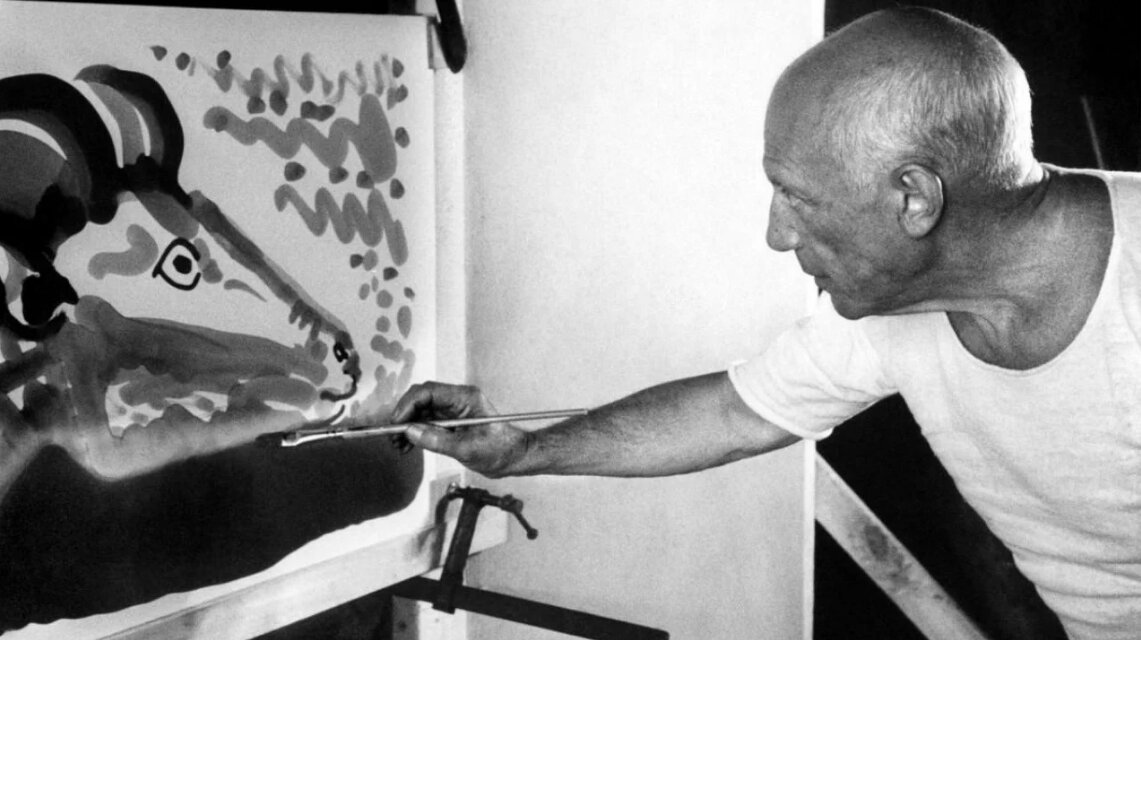TMoCA to screen documentary on Picasso

TEHRAN-The 1956 French documentary film about the renowned Spanish painter Pablo Picasso titled “The Mystery of Picasso” directed by Henri-Georges Clouzot will be shown at the Tehran Museum of Contemporary Art (TMoCA) in Tehran on Sunday.
The screening of the 75-minute movie, with Persian subtitle, will begin at 4 p.m. at the cinematheque of the IAF, Mehr reported.
In 1955, Clouzot joined forces with his friend Pablo Picasso to make an entirely new kind of art film, “a film that could capture the moment and the mystery of creativity.” Together, they devised an innovative technique: the filmmaker placed his camera behind a semitransparent surface on which the artist drew with special inks that bled through.
Clouzot captured a perfect reverse image of Picasso’s brushstrokes, turning the motion-picture screen into the artist’s canvas. Here, the master creates, and sometimes obliterates, twenty works (most of them, in fact, destroyed after the shoot), ranging from playful black-and-white sketches to vivid color murals.
In the film, the painter Pablo Picasso produces 20 drawings and paintings, at first using inks that bleed through the paper on which, he is drawing, with the act of creation filmed in real-time from the backside of the easel, and later using oil paints, with Clouzot employing a stop-motion-like effect to depict the development and modification of the works.
The film begins with Picasso creating simple marker drawings in black and white, and he gradually progresses to full-scale collages and oil paintings.
“The Mystery of Picasso” won the Special Jury Prize at the 1956 Cannes Film Festival and was shown out of competition at the 1982 Festival.
Pablo Picasso (1881-1973) was a Spanish painter, sculptor, printmaker, ceramicist, and theater designer who spent most of his adult life in France. One of the most influential artists of the 20th century, he is known for co-founding the Cubist movement, the invention of constructed sculpture, the co-invention of collage, and the wide variety of styles that he helped develop and explore.
Henri-Georges Clouzot (1907-1977) was a French film director, screenwriter, and producer. He is best remembered for his work in the thriller film genre, having directed “The Wages of Fear” (1953) and “Les Diaboliques” (1955), which are critically recognized as among the greatest films of the 1950s. He also directed documentary films, including “The Mystery of Picasso” (1956), which was declared a national treasure by the government of France.
The film screening is concurrent with the “Picasso in Tehran” exhibition, which is underway at the TMoCA. The exhibition presents a narrative of Picasso's life and the artistic periods he traversed. It features 66 works by the renowned Spanish painter and sculptor from the collection of the TMoCA. It will be open daily (except Mondays) until May 20.
Among these, 26 aquatint prints from the renowned series “La Tauromaquia” (The Art of Bullfighting)—which have never been exhibited in Iran before—will be a highlight.
This collection is one of his most celebrated works in the realm of printmaking, showcasing his deep fascination with Spanish culture, particularly the dramatic and ritualistic spectacle of bullfighting.
The series was inspired by José Delgado’s 18th-century book “La Tauromaquia o arte de torear” (Tauromachia, or The Art of Bullfighting), which detailed the history and techniques of bullfighting. José Delgado, known as Pepe Illo, was a famous matador, and his book became a significant reference in Spain’s bullfighting tradition. Picasso, who was passionate about bullfighting since childhood, visually reinterpreted these historical accounts through his unique artistic style.
Picasso employed the aquatint technique, a printmaking process that allows for rich tonal variations, giving the images a dramatic, almost painterly effect. The works are minimalist yet expressive, featuring bold black-and-white contrasts that emphasize movement, tension, and the raw energy of the bullfight.
Through swift, gestural lines and fluid compositions, Picasso captures the essence of the bullfight—the grace of the matador, the power of the bull, and the tension of the confrontation. His depictions are not merely literal illustrations but abstract and emotionally charged representations of the spectacle.
“La Tauromaquia” reflects Picasso’s lifelong fascination with bulls and bullfighting, themes that appear frequently in his work, from early sketches to his masterpiece “Guernica” (1937).
SS/SAB
